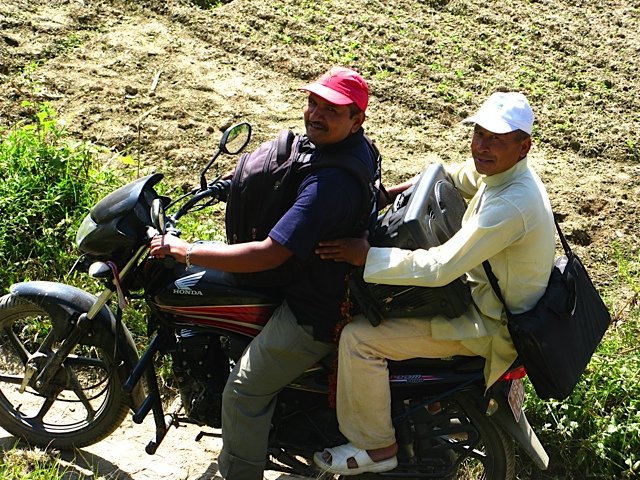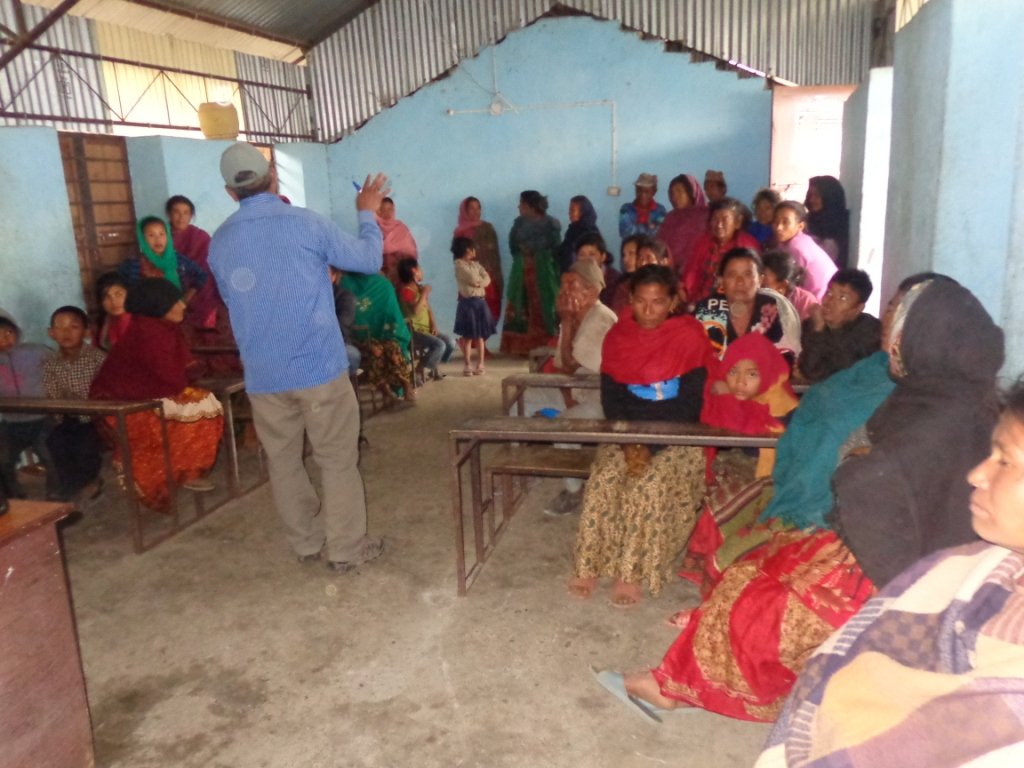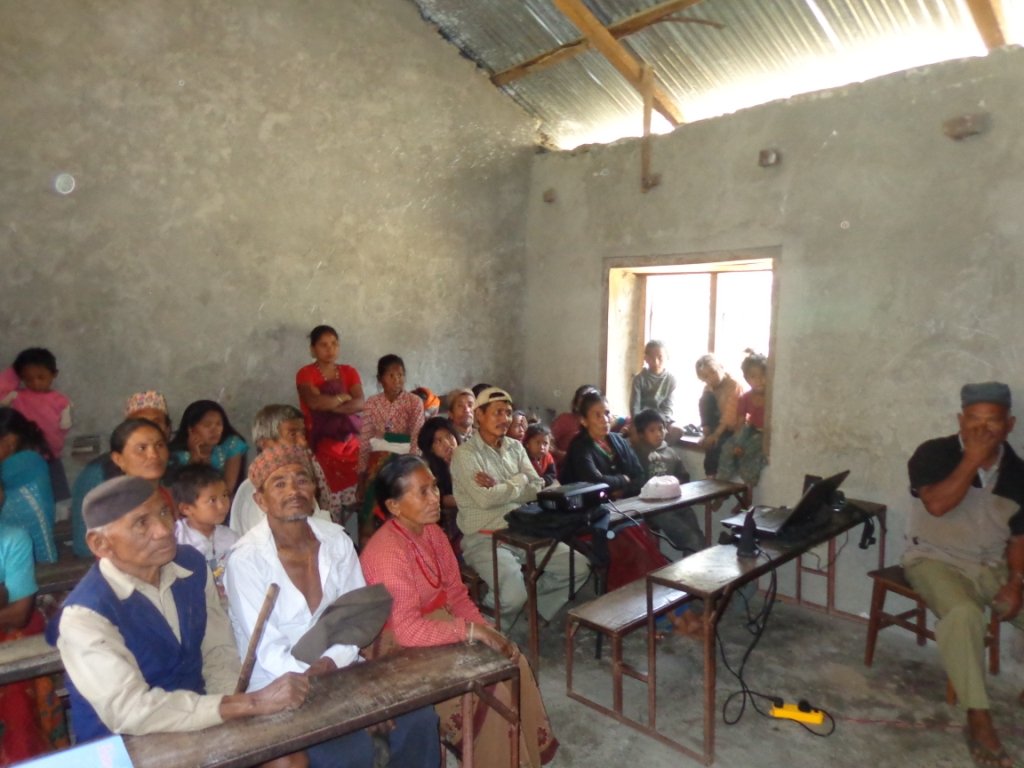By Karin Reibel | Project Leader
Winter in Rajbash
Winter is a slow season for our hospital. Our last health camp in October still was very well attended, but colder temperatures now keep people closer to home. While injuries continue to top our list of presenting issues, respiratory illnesses have increased this season. We also saw a greater number of communicable diseases (TB, cholera) and infestations. Our numbers for gynecological services are still not where we would like them to be. An important part of our mission is to improve the health of women and children and to reduce maternal and infant mortality which is considerable in Nepal. Statistics tell us that in Nepal institutional birth is safer than home birth for both mother and child. Proper prenatal care combined with a hospital birth and aftercare enhances health outcomes for all involved. We are determined to continue our outreach into the villages to educate families about the importance of perinatal services.
Our health educator, Mr. Min Prasad, is a vital force for health education in Rajbash as well as the surrounding villages. He brings many years of experience to this endeavor and pursues his vocation with passion and great creativity.
When we recently visited the hospital we had an opportunity to witness our outreach team in action. Word had reached the hospital that in a distant village seven women were in various stages of pregnancy, none of them receiving any care or planning to have a hospital birth. A plan was hatched to travel to the village for a presentation on the benefits of perinatal care and institutional births. One staff member was delegated to the village to explain our plan and receive permission for the event from the village elders. Receptivity was enhanced by the promise of an entertaining movie.
On the morning of the presentation Min assembled his props: Computer, cables, projector, microphones and a sheet for a screen. Strapping the large bag to the front of his body he mounted his motorcycle. On the backseat crouched the local school headmaster carrying a large speaker and additional materials. The headmaster, who is well respected for his position, acts as a liaison between the hospital and the surrounding communities. When needed he accompanies Min Prasad on his outings. With all gear secured, the two set off on the bumpy, dangerous dirt and rock road which eventually took them within sight of the village; the remaining distance to be negotiated on foot. Expectant villagers, were milling around the small village school where the presentation was to take place. (Incidentally, the school is one of many that DCWC has built in the back country of Nepal.) Inside, adults and children alike, eyes wide with curiosity, were following every detail of setting up the equipment, and by the time Min Prasad was ready, only standing room was available in the little classroom. The show could begin!
The movie, both educational and humorous, elaborates on the sanitary and health reasons for building and utilizing toilets as an alternative to the fields. The audience, having very little exposure to electronic entertainment, was mesmerized. But when the movie reached the halfway point, Min stopped the projector and, along with the school headmaster began the presentation on the advantages of institutional birth. This part truly showed Min’s creativity in getting his point across. His lecture, aided by powerpoint slides, was interspersed with song, and fanciful acting out, and kept the audience attentive. Finally, the greatly anticipated second half of the movie was shown. A question and answer period at the end showed that the presentation had been received with great interest and open minds. People kept coming up to the hospital staff with questions and to socialize before they finally could repack the equipment and start the arduous journey back to Rajbash.
Village outreach is just one of our efforts to improve the lives of women and children in Nepal. As some of you might remember, in order to strengthen our department for perinatal services we applied at the beginning of last year with the government of Nepal to be certified as a Government Birthing Center. Under the rules of this program the hospital would receive a payment of NPR 1000 per delivery while a new mother will receive free ambulance transport to and from the hospital as well as NPR 1000 for the first two children delivered at the birthing center. A government shutdown of the program in August dashed our hopes to obtain this certification. However, it appears that now the program has been resurrected. We have reapplied to be considered for this certification and are hoping that the recent addition of a proper birthing bed and an ultrasound machine will make our application so much more compelling. We will keep you posted!
Lastly, here is an update on our plans to install solar panels on the hospital roof to make us independent of the unreliable electric grid. We are currently studying several bids and hope to select the most suitable one shortly. As soon as sufficient funds are available we will proceed with this installation.
We want to close with a big THANK YOU to all who are so steadfastly supporting us in making a difference in Nepal. What would we do without you? May the new year bless you with peace and kindness wherever you are.
Project reports on GlobalGiving are posted directly to globalgiving.org by Project Leaders as they are completed, generally every 3-4 months. To protect the integrity of these documents, GlobalGiving does not alter them; therefore you may find some language or formatting issues.
If you donate to this project or have donated to this project, you can receive an email when this project posts a report. You can also subscribe for reports without donating.
Support this important cause by creating a personalized fundraising page.
Start a Fundraiser

